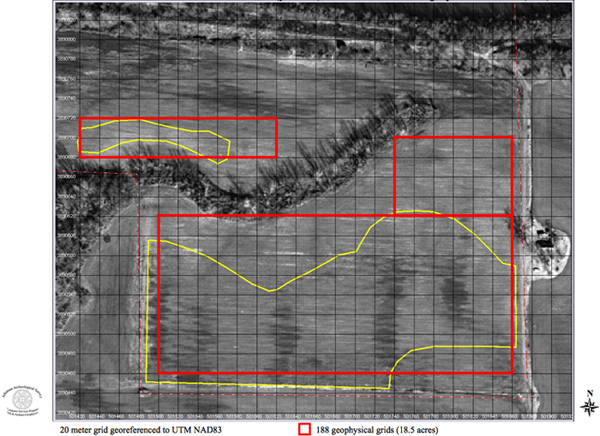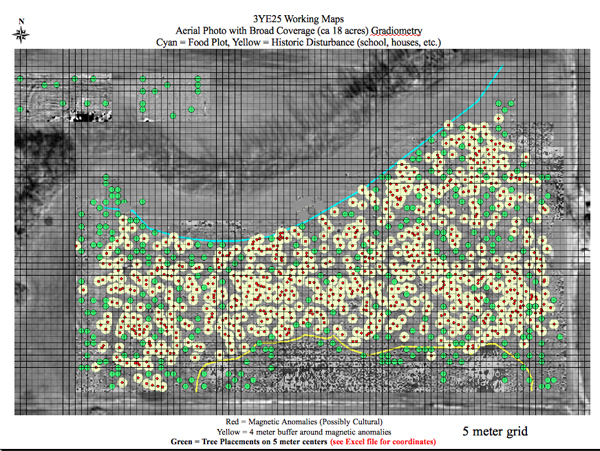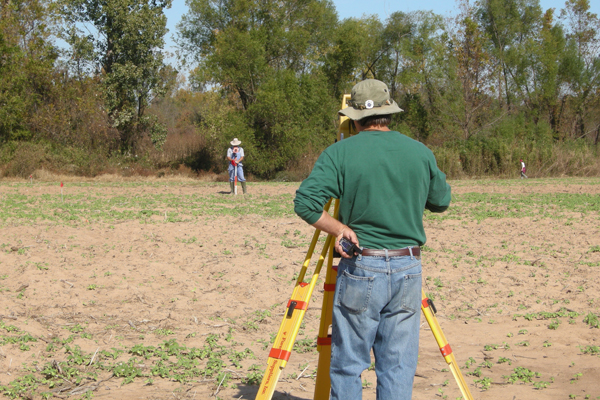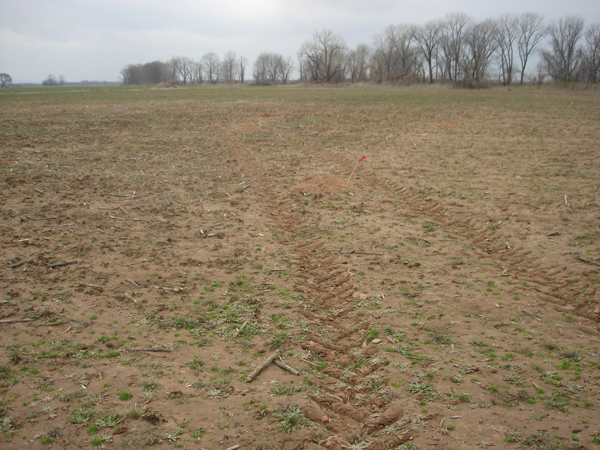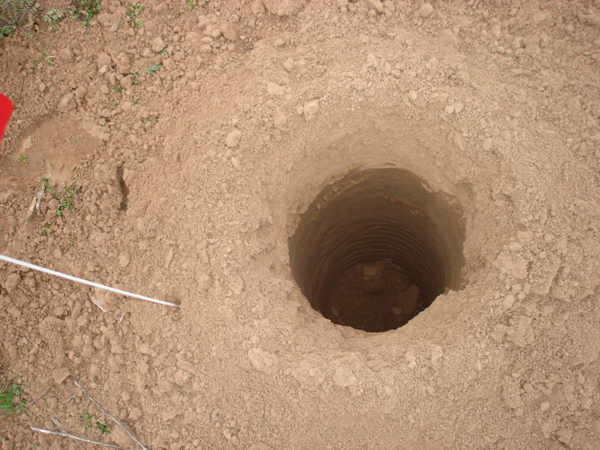Tree Planting at 3YE25
Arkansas Archeological Survey Geophysical remote sensing for the Carden Bottoms (3YE25) project was designed in part to rapidly generate information about the distribution of archeological features in advance of imminent plans by the National Resource Conservation Service (NRCS) to plant 300 trees within the study area as part of a wooded-wetland reclamation effort. Our mutual goal was to protect significant archeological features from being damaged by the tree planting operation. To accomplish this goal, we first collected gradiometer data along one-meter traverses across the eight hectare area in which trees were to be planted, providing a low resolution view of magnetic anomalies for the entire area. Using geographic information system (GIS) software, we georeferenced these data to the site coordinate system to provide accurate locations on the ground.
Next, we used GIS to generate a four meter buffer area around all magnetic anomalies that we interpreted as possible cultural features. Using GIS again, we digitized 300 locations for tree plantings in areas outside the magnetic anomalies and surrounding buffer areas. A coordinate list for the recommended tree locations was generated, and we located those points on the ground using laser total stations set up on our main site datum and two secondary datum points. Each tree point was marked with a red pin flag as a guide for planting.
Tree planting by NRCS field staff involved driving a truck-mounted soil auger across the site, stopping at each flagged point to drill a hole, approximately 10 cm wide and 1 m deep. The drilling left a ring of back dirt around each hole. A few days later, small seedlings were planted in each hole.
The day after the tree planting operation had been completed, Skip Stewart-Abernathy, of the Survey's research station at the University of Arkansas Winthrop Rockefeller Institute on Petit Jean Mountain, conducted a walk-over survey of the site to examine the drilled holes and back dirt for evidence of buried cultural materials. His circuit across the site enabled him to examine directly or from a short distance all of the 300 tree holes. Close examination was conducted of tree holes drilled near house areas identified in the gradiometer survey and in potential burial areas identified in oral history interviews. Stewart-Abernathy took digital photographs that show about one-third of the tree holes up close and the rest at a distance of up to a few meters.
The operation of the drill obscured the soil profile inside each hole from the surface to about 20 cm depth. We know from our excavations across the site that the disturbed plow zone extends to an average depth of 35 cm, so we are confident that this circumstance produced no loss of information about the presence of burial cultural materials. Stewart-Abernathy observed no midden layers, features, or other stratification in any of the tree holes below the upper plow zone horizon. The back dirt surrounding nearly all of the holes was the light yellow brown color that is generally exhibited by undisturbed sediments across the site; only a few holes (about 5% of the total) were surrounded by a slightly darker brown matrix. Stewart-Abernathy also observed no artifacts in the back dirt surrounding the tree holes; surface visibility at the time was excellent though the field was dry and no rain had fallen since the holes had been drilled.
From these observations we conclude that the drilled tree holes avoided most if not all high density artifact areas and inflicted no significant damage to any buried cultural materials at the site. |
||||||||||||
 |

|
